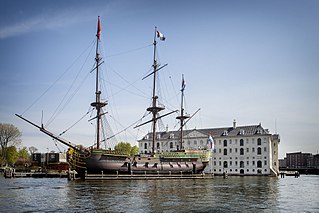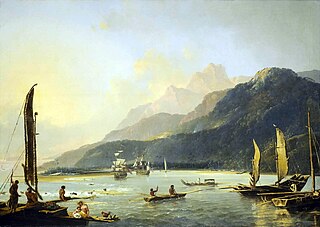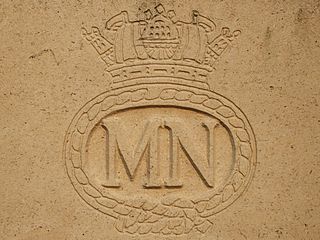External links
- The Ship at IMDb
- The Making of 'The Ship' (BBC dead link)
- Genome Listings 2002
- Modern Sailors Battle Cook's High Seas
| The Ship | |
|---|---|
| Directed by | Chris Terrill |
| Starring | Alexander Cook, Chris Terrill, John Jeffrey, John Selwyn Gilbert, Andrew Lewis & James Rees |
| Narrated by | Dominic Frisby |
| Theme music composer | John Harle |
| Country of origin | United Kingdom |
| Original language | English |
| No. of series | 1 |
| No. of episodes | 6 |
| Production | |
| Executive producer | Laurence Rees |
| Producer | Chris Terrill |
| Running time | 360 min |
| Release | |
| Original network | BBC Two |
| Original release | 20 August – 24 September 2002 |
The Ship: Retracing Cook's Endeavour Voyage is a documentary series about a 21st-century voluntary crew on a six-week journey from the east coast of Australia to Jakarta, Indonesia, retracing the famous voyage of Lieutenant James Cook aboard a replica of HM Bark Endeavour.
The 55 men and women on board – among them the director, producer and cameraman Chris Terrill – came from several countries and nationalities. The crew traced Cook's footsteps from one historical landmark to another. All of the volunteers lived and worked as 18th century sailors, but were not required to wear period costumes.
The crew consisted of a core of around a dozen full-time sailors with the skills needed to manage a square-rigger, under the leadership of Captain Chris Blake. These "regulars" were supplemented by a varied group of volunteers, amongst whom were groups of specialists – botanists (under Kew's Tom Hoblyn), navigators (led by John Jeffrey from the Royal Institute of Navigation), and an international group of historians. Regardless of specialisation, all the volunteers acted as deck-hands under the supervision of the permanent crew.
The Endeavour replica had some modern conveniences: a satellite phone for emergencies, and a flush toilet in the lower deck for use while sailing in the Great Barrier Reef. There was also modern navigation equipment (GPS and radar), but the navigation team were not given access to these, nor to modern charts, and instead practised mid-18th Century techniques, such as the Lunar Distance Method for finding longitude.
The show originally aired on BBC Two from 20 August to 24 September 2002. The trip was filmed a year earlier and the episode where the crew were informed of the 9/11 attacks was shown on 10 September 2002.
In 2004, an article written by Alexander Cook detailing his experience during the re-enactment was published in the History Workshop Journal no.57.

Captain James Cook was a British explorer, cartographer and naval officer famous for his three voyages between 1768 and 1779 in the Pacific Ocean and to New Zealand and Australia in particular. He made detailed maps of Newfoundland prior to making three voyages to the Pacific, during which he achieved the first recorded European contact with the eastern coastline of Australia and the Hawaiian Islands, and the first recorded circumnavigation of New Zealand.

The Amsterdam was an 18th-century cargo ship of the Dutch East India Company. The VOC was established in 1602. The ship started its maiden voyage from Texel to Batavia on 8 January 1749, but was wrecked in a storm on the English Channel on 26 January 1749. The shipwreck was discovered in 1969 in the bay of Bulverhythe, near Hastings on the English south coast, and is sometimes visible during low tides. The location in 1969 was found by Bill Young, the site agent/project manager for the sewage outfall being built by the William Press Group. With time on his hands during the long stay away from home, he followed up the rumour of the going aground. He was castigated by the Museum of London for scooping out the interior of the bow with a digger as it could have led to the structure collapsing. However, it uncovered the initial items which led to a more extensive excavation of the cargo which reflected life at the time. The wreck is a Protected Wreck managed by Historic England. Some of the findings from the site are in The Shipwreck Museum in Hastings. A replica of the ship is on display in Amsterdam.


HMS Resolution was a sloop of the Royal Navy, a converted merchant collier purchased by the Navy and adapted, in which Captain James Cook made his second and third voyages of exploration in the Pacific. She impressed him enough that he called her "the ship of my choice", and "the fittest for service of any I have seen".

The Merchant Navy is the maritime register of the United Kingdom and comprises the seagoing commercial interests of UK-registered ships and their crews. Merchant Navy vessels fly the Red Ensign and are regulated by the Maritime and Coastguard Agency (MCA). King George V bestowed the title of "Merchant Navy" on the British merchant shipping fleets following their service in the First World War; a number of other nations have since adopted the title. Previously it had been known as the Mercantile Marine or Merchant Service, although the term "Merchant Navy" was already informally used from the 19th century.
The Middle Passage was the stage of the Atlantic slave trade in which millions of enslaved Africans were transported to the Americas as part of the triangular slave trade. Ships departed Europe for African markets with manufactured goods, which were then traded for slaves with rulers of African states and other African slave traders. Slave ships transported the slaves across the Atlantic. The proceeds from selling slaves were then used to buy products such as furs and hides, tobacco, sugar, rum, and raw materials, which would be transported back to northern Europe to complete the triangle.

Impressment, colloquially "the press" or the "press gang", is the taking of men into a military or naval force by compulsion, with or without notice. European navies of several nations used forced recruitment by various means. The large size of the British Royal Navy in the Age of Sail meant impressment was most commonly associated with Great Britain and Ireland. It was used by the Royal Navy in wartime, beginning in 1664 and during the 18th and early 19th centuries as a means of crewing warships, although legal sanction for the practice can be traced back to the time of Edward I of England. The Royal Navy impressed many merchant sailors, as well as some sailors from other, mostly European, nations. People liable to impressment were "eligible men of seafaring habits between the ages of 18 and 55 years". Non-seamen were sometimes impressed as well, though rarely. In addition to the Royal Navy's use of impressment, the British Army also experimented with impressment from 1778 to 1780.
The line-crossing ceremony is an initiation rite that commemorates a person's first crossing of the Equator. The tradition may have originated with ceremonies when passing headlands, and become a "folly" sanctioned as a boost to morale, or have been created as a test for seasoned sailors to ensure their new shipmates were capable of handling long, rough voyages. Equator-crossing ceremonies, typically featuring King Neptune, are common in the Navy and are also sometimes carried out for passengers' entertainment on civilian ocean liners and cruise ships. They are also performed in the merchant navy and aboard sail training ships.

La Santa María de la Inmaculada Concepción, or La Santa María, originally La Gallega, was the largest of the three ships used by Christopher Columbus in his first voyage across the Atlantic Ocean in 1492. Her master and owner was Juan de la Cosa.

A lascar was a sailor or militiaman from the Indian subcontinent, Southeast Asia, the Arab world, British Somaliland or other lands east of the Cape of Good Hope who was employed on European ships from the 16th century until the mid-20th century.

Götheborg of Sweden is a sailing replica of the Swedish East Indiaman Götheborg I, launched in 1738. All sailors survived when the original ship sank off Gothenburg, Sweden, on 12 September 1745, while approaching the harbour on her return from a third voyage to China. Construction of the replica started in 1995, with the hull launched in 2003, and the rig fully tested for the first time in 2005. Much of the time was spent researching how to rebuild the replica. In 2008, Götheborg completed the first Baltic Sea Tour. It is one of the world's largest operational wooden sailing ships.

Timothy Severin was a British explorer, historian, and writer. Severin was noted for his work in retracing the legendary journeys of historical figures. Severin was awarded both the Founder's Medal of the Royal Geographical Society and the Livingstone Medal of the Royal Scottish Geographical Society. He received the Thomas Cook Travel Book Award for his 1982 book The Sindbad Voyage.

La Grace is a replica of a brig from the 18th century. The original ship of Augustine Herman bore this name during merchant and exploratory travels around Europe, United States, Caribbean and across the Atlantic Ocean. La Grace was also renowned for her corsair activities. Especially well-known is her victory over two Spanish barques carrying sugar, tobacco and wine near the coast of Guatemala. This modern replica is utilised solely to teach the art of old-time seamanship. Her crew is mainly from the Czech Republic.

Slave ships were large cargo ships specially built or converted from the 17th to the 19th century for transporting slaves. Such ships were also known as "Guineamen" because the trade involved human trafficking to and from the Guinea coast in West Africa.

The first voyage of James Cook was a combined Royal Navy and Royal Society expedition to the south Pacific Ocean aboard HMS Endeavour, from 1768 to 1771. It was the first of three Pacific voyages of which James Cook was the commander. The aims of this first expedition were to observe the 1769 transit of Venus across the Sun, and to seek evidence of the postulated Terra Australis Incognita or "undiscovered southern land".

Spirit of Mystery is a replica of the Mount's Bay lugger Mystery which made a voyage to Australia in 1854/55. In 1854 a discussion in the Star Inn in Newlyn led seven fishermen to set sail in the hope of finding their fortunes. 116 days later, their Cornish lugger, Mystery, a 37 ft fishing boat that had never previously been out of sight of land, arrived in Melbourne, 12,000 miles away.

HMS Endeavour replica is a replica of HMS Endeavour, the bark commanded by Lieutenant James Cook when he charted New Zealand and the eastern coast of Australia.

Hermione is a 32-gun Concorde-class frigate fitted for 12-pounder guns, completed in Rochefort by the Asselin organisation in 2014. It is a reproduction of the 1779 Hermione, which achieved fame by ferrying General La Fayette to the United States in 1780 to allow him to rejoin the American side in the American Revolutionary War.
Tuia 250 was a government-sponsored commemoration for the 250th anniversary of the arrival of Captain Cook on HMS Endeavour in Aotearoa in 1769–1770. Highlights of the event were a fleet of Polynesian double-hulled waka and tallships retracing Cook's route and the British High Commissioner delivering an 'expression of regret' to local iwi over the killings of the indigenous Māori people by Cook and his crew.
Nautical operations refers to the crew operation of a ship. It is the term used in academic education to refer to the studies of this professional field. Nautical operations refers to all the operational procedures, specific roles of officers and crew members, and regular functions and technical processes, which together shape the structure and functions for the general operations of a ship.